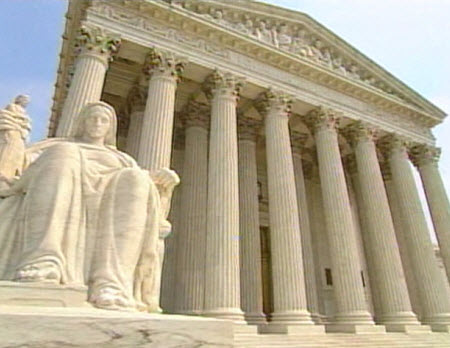Supreme Court Video Bill Passes Senate Judiciary
Would open Supreme Court to cameras

For the first time in a decade, bills that would provide greater public access to the courts via the media, including streaming, have cleared an important hurdle.
That came at a markup in the Senate Judiciary Committee Friday (June 24).
Also Read: Fix the Court Says Streaming Should Be One Video Reform
According to Fix the Court, which has been advocating for cameras in the court for years, the committee passed two access-related bills.
By a vote of 14 to nine, to approved the Cameras in the Courtroom Act, which would require the Supreme Court to allow video recording of oral arguments and the reading of opinions.
It also passed the Sunshine in the Courtroom Act, which would allow judges to authorize live or delayed video and audio of courtroom proceedings.
“Whatever the fate of these bills, today is an apt reminder that Congress has broad authority to set institutional policies in our federal courts, even in the Supreme Court, from where they meet, what kind of cases they hear and, yes, whether they’re permitted to close their hearings to 99.9% of the public despite what modern technology affords,” said FTC’s Gabe Roth said. “The Committee’s continued interest in working to open up the historically opaque third branch, under both Democratic and Republican leadership, shows that transparency is a worthy goal that has no partisan bounds.”
Also Read: Groups Ask Supremes to Keep Live Coming
"Whatever the fate" is a key phrase. Attempts have been made for decades to get courts to open up to audio and video. Progress has been made on that front in various courts, including the Supreme Court, which opened its arguments up to live audio during the pandemic given that in- person attendance was barred. That was an upgrade from the end-of-week audio releases the High Court had adopted. But video is still off limits.
One big issue is separation of powers and to what degree the Congress can tell the federal courts what to do. Another is the judges who feel video potentially distorts decision making given that it can be cherrypicked and edited.
Sen. Ted Cruz (R-Texas) was one of those opposed to cameras in the Supreme Court. He said he was concerned about politicizing the court, including lawyers and justices playing to the camera and arguments sliced and diced in the editing room.
Fix the Court points said that some two-thirds of Americans have supported live video and/or audio in the Supreme Court since it started since FTC started polling in 2014.
As to the current state of media access, according to Fix the Court: "The Supreme Court and 91 of 94 district courts do not allow cameras. Fifteen district courts are currently participating in a two-year live audio pilot program that began this past February. Although, per Judicial Conference policy, circuit courts may offer live audio and/or video access for arguments, only two, the D.C. (live audio) and Ninth (live video) Circuits, typically offered such access for their arguments, until the pandemic hit, whereupon all 14 appeals courts live streamed their hearings. Currently, only four of the 14, the Second and Federal Circuits, plus the D.C. and Ninth Circuits, have committed to live streaming into the fall."
Broadcasting & Cable Newsletter
The smarter way to stay on top of broadcasting and cable industry. Sign up below
Contributing editor John Eggerton has been an editor and/or writer on media regulation, legislation and policy for over four decades, including covering the FCC, FTC, Congress, the major media trade associations, and the federal courts. In addition to Multichannel News and Broadcasting + Cable, his work has appeared in Radio World, TV Technology, TV Fax, This Week in Consumer Electronics, Variety and the Encyclopedia Britannica.

